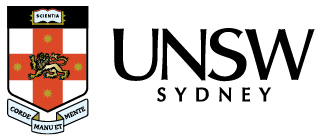The Aggregate Ranking of Top Universities (ARTU) is a league table based on the annual World University Rankings by Times Higher Education (THE) , Quacquarelli Symonds (QS) and Academic Ranking of World Universities (ARWU). ARTU consolidates the performance of universities across the three rankings to accommodate for performance variations due to methodological differences between these rankings, and thereby facilitates the longitudinal comparison of overall performance for the top universities in the world.
The indicator used to determine a university’s ARTU rank is the sum of its rank from each of the three rankings. It has been chosen over the arithmetic average as an indicator better suited to describe the overall performance of an institution across THE, QS, and ARWU, where the institution is compared to a different group of peers from one ranking to another. The ARTU rank of an institution is less sensitive to the anomalies in the performance of any one ranking, thus providing a more realistic position of a university in comparison to its peers.
For the avoidance of doubt, this gives the most realistic benchmark of global rankings. Simply put, if for example you’re ranked 75th then there are 74 institutions above you. If you use the arithmetic average, you cannot say that.
For the 2024 edition of ARTU, the results of World University Rankings published by THE, QS, and ARWU in the 2024 calendar year were utilised*. For universities whose rank is published as a range in THE and ARWU (e.g. 101-150), ARTU recalculates a distinct rank from the respective component scores. This recalculation process enables ARTU to consider all universities ranked by THE and ARWU, and those ranked within the Top 600 of QS. Universities ranked above 600 by QS are not considered by ARTU due to the limited availability of data on component scores.
To disambiguate universities with more than one name variation across the rankings, a matching algorithm was applied followed by a manual review process. For the 2024 release, there were more than 3,150 university name variations mapped to 2,533 unique universities.
Following data preparation and name disambiguation, the processed ranking datasets are consolidated and the arithmetic sum for all universities ranked in THE & ARWU, and top ranked universities in QS is calculated. In 2024, 471 universities based on this indicator are ranked in ARTU with the result of the top 400 published online.
*Source:
- • QS 2025 World University Ranking released June 2024
- • ARWU 2024 World University Ranking released August 2024
- • THE 2025 World University Ranking released October 2024
